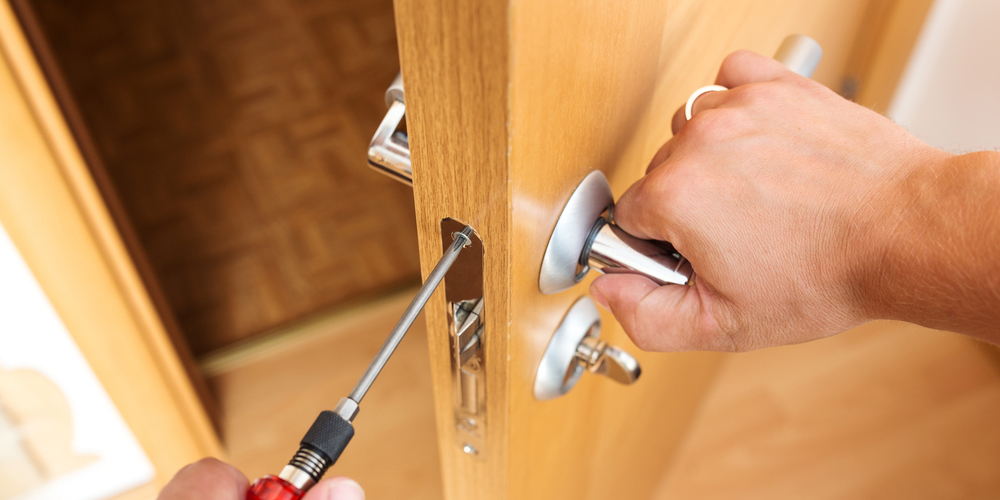Identifying a Locked-Up Ankle: Understanding the Symptoms
A locked-up ankle can be a frustrating and painful experience, making it difficult to perform daily activities. This condition often results from an injury or overuse, causing the ankle to become stiff and immobile. To effectively address a locked-up ankle, it is crucial to understand the symptoms and differentiate it from other ankle injuries.
The primary symptoms of a locked-up ankle include pain, swelling, and reduced mobility. The pain can vary from a dull ache to a sharp stab, often intensifying when attempting to move the ankle. Swelling is a common response to injury, as the body increases blood flow to the affected area to facilitate healing. Reduced mobility is another obvious symptom, making it challenging to walk, run, or even stand for extended periods.
It is essential to differentiate a locked-up ankle from other ankle injuries, such as sprains or strains. A sprain occurs when the ligaments surrounding the ankle stretch or tear, often causing pain and swelling. In contrast, a strain involves the overstretching or tearing of muscles or tendons. A locked-up ankle is characterized by a limited range of motion and persistent stiffness, making it distinct from other ankle injuries.
Immediate First Aid: Relieving Pain and Swelling
When dealing with a locked-up ankle, it is essential to take immediate action to alleviate pain and reduce swelling. The R.I.C.E. method (Rest, Ice, Compression, and Elevation) is a well-established first aid technique for addressing soft tissue injuries, including a locked-up ankle.
Rest is crucial for the healing process. Avoid putting weight on the injured ankle and limit mobility as much as possible. This can help prevent further damage and provide the necessary environment for recovery.
Ice application can help reduce swelling and numb the pain. Apply an ice pack to the affected area for 15 to 20 minutes, several times a day, with at least a 1-hour break between applications. Be sure to wrap the ice pack in a cloth to prevent direct skin contact and potential frostbite.
Compression is another effective way to minimize swelling. Wrap the ankle with an elastic bandage, starting at the toes and working your way up to the calf. Ensure the wrap is not too tight, as this can cut off circulation. Loosen the bandage if you experience tingling, numbness, or increased pain.
Elevation is particularly important during the first 48 to 72 hours after the injury. By raising the ankle above the level of your heart, you can help reduce swelling and promote blood flow, which aids in the healing process. Place pillows under the injured ankle while resting or sleeping to maintain the desired elevation.
Implementing the R.I.C.E. method can significantly alleviate pain and swelling in a locked-up ankle, allowing for a faster recovery. However, if symptoms persist or worsen, it is crucial to consult a healthcare professional for further evaluation and treatment.
Seeking Professional Help: When to Consult a Healthcare Professional
While self-care measures such as the R.I.C.E. method can be helpful in managing a locked-up ankle, there are situations where professional medical assistance is necessary. Consult a healthcare professional if you experience any of the following signs or symptoms:
- Severe pain that persists or worsens despite rest and self-care measures.
- Significant swelling, bruising, or deformity around the ankle.
- Inability to bear weight on the affected ankle or walk without assistance.
- A history of previous ankle injuries or chronic ankle instability.
- Persistent stiffness or limited range of motion even after attempting gentle range-of-motion exercises.
- Fever, redness, or warmth around the ankle, which may indicate an infection.
Healthcare professionals, such as orthopedic specialists, sports medicine physicians, or physical therapists, can provide a proper diagnosis and develop a treatment plan tailored to your specific needs. This may include prescription medications, immobilization devices, or even surgery in severe cases. By seeking professional help, you can ensure a proper recovery and reduce the risk of long-term complications or re-injury.
Restoring Mobility: Gentle Range-of-Motion Exercises
As the swelling and pain in your locked-up ankle begin to subside, it is essential to start restoring mobility through gentle range-of-motion exercises. These exercises can help improve flexibility, reduce stiffness, and promote healing. Always consult with a healthcare professional before starting any new exercise program to ensure safety and effectiveness.
Ankle Circles
Sit on a chair with your feet flat on the floor. Lift your affected foot slightly and rotate it in a circular motion, first clockwise and then counterclockwise. Perform 10 to 15 repetitions in each direction, twice a day.
Heel-to-Toe Walking
Stand behind a chair or wall for support, if needed. Place the heel of your affected foot directly in front of the toes of your other foot, then slowly transfer your weight forward, lifting the back foot off the ground. Continue walking in this manner for 10 to 20 steps, then reverse the direction. Repeat this exercise twice a day.
Alphabet Tracing
Sit on a chair with your feet flat on the floor. Lift your affected foot and, keeping your knee bent, trace the letters of the alphabet in the air using your big toe. Perform this exercise once a day.
Remember to perform these exercises gently and stop immediately if you experience increased pain, swelling, or any other unusual symptoms. Gradually increasing your range of motion will help you recover faster and reduce the risk of re-injury.
Strengthening the Ankle: Progressive Exercise Program
Strengthening the muscles surrounding the ankle is crucial for maintaining stability and preventing future lock-ups. A progressive exercise program, which gradually increases in intensity and complexity, can help you regain strength and confidence in your ankle. Always consult with a healthcare professional before starting any new exercise program.
Towel Crunches
Sit on a chair with your feet flat on the floor. Place a small towel under your affected foot. Using your toes, scrunch up the towel, pulling it towards you. Slowly straighten your foot to release the towel. Perform 10 to 15 repetitions, twice a day.
Heel Raises
Stand behind a chair or wall for support, if needed. Slowly lift your heels off the ground, rising onto the balls of your feet. Hold for a few seconds, then slowly lower your heels back to the ground. Perform 10 to 15 repetitions, twice a day.
Resistance Band Exercises
Sit on a chair with your feet flat on the floor. Loop a resistance band around the ball of your affected foot. Push your foot against the band, resisting the force as you point your toes away from your body. Perform 10 to 15 repetitions, twice a day. Gradually increase the resistance as your ankle strength improves.
As you progress through your exercise program, aim to incorporate a variety of exercises that target different muscle groups. This will help ensure a balanced and comprehensive strengthening regimen, ultimately reducing the risk of future ankle injuries.
Preventing Future Injuries: Tips and Strategies
Preventing future ankle injuries is essential for maintaining long-term ankle health and mobility. By incorporating the following tips and strategies into your daily routine, you can significantly reduce the risk of re-injury and ensure a smooth recovery process.
Warm-Up and Cool-Down Techniques
Before engaging in any physical activity, take the time to warm up your muscles and joints properly. This can include light cardio exercises, such as jogging or jumping jacks, followed by dynamic stretches that mimic the movements of your chosen activity. After your workout, perform static stretches to help cool down your muscles and promote flexibility.
Proper Footwear
Wearing appropriate footwear for your chosen activity is crucial for maintaining ankle stability and support. Choose shoes that fit well, provide adequate cushioning, and offer sufficient arch support. Avoid high-heeled shoes, as they can compromise your ankle’s natural range of motion and increase the risk of injury.
Strength Training and Balance Exercises
Incorporate strength training and balance exercises into your fitness routine to improve your ankle stability and overall physical fitness. Exercises such as single-leg squats, heel-to-toe walking, and single-leg deadlifts can help strengthen the muscles surrounding your ankle and promote better balance and coordination.
Maintain a Healthy Weight
Carrying excess body weight can put additional strain on your ankles, increasing the risk of injury. By maintaining a healthy weight through a balanced diet and regular exercise, you can reduce the stress on your ankles and improve your overall joint health.
By following these tips and strategies, you can significantly reduce the risk of future ankle injuries and ensure a smooth recovery process. Remember, consistency is key, so make these practices a regular part of your daily routine to maintain long-term ankle health and mobility.
Maintaining Progress: Long-Term Rehabilitation and Care
Once you have regained mobility and strength in your ankle, it is crucial to maintain your progress through long-term rehabilitation and care. By incorporating regular exercise, stretching, and self-assessment into your routine, you can ensure the continued health and stability of your ankle.
Regular Exercise and Stretching
Incorporate exercises and stretches that target the muscles surrounding your ankle into your regular fitness routine. This can help maintain flexibility, improve balance, and reduce the risk of re-injury. Aim to perform these exercises at least two to three times a week, and gradually increase the intensity and complexity as your ankle strength and mobility improve.
Self-Assessment and Monitoring
Regularly assess your ankle for any signs of pain, swelling, or reduced mobility. If you notice any changes or issues, consult with a healthcare professional to determine the best course of action. By staying proactive in monitoring your ankle health, you can address potential problems before they become more severe.
Maintain Overall Physical Fitness
Maintaining a high level of overall physical fitness is crucial for long-term ankle health. Engage in regular cardiovascular exercise, strength training, and flexibility workouts to keep your body in optimal condition. This can help reduce the risk of future ankle injuries and promote overall joint health.
By committing to long-term rehabilitation and care for your ankle, you can ensure continued mobility, stability, and strength. Remember, consistency is key, so make these practices a regular part of your daily routine to maintain long-term ankle health and prevent future lock-ups.
Living an Active Lifestyle: Returning to Daily Activities
Resuming your daily activities and sports after recovering from a locked-up ankle can be a challenging process. However, by following a gradual progression and closely monitoring your ankle for signs of re-injury, you can safely return to the activities you enjoy.
Gradual Progression
Instead of jumping back into your regular routine all at once, start with light activities and gradually increase the intensity and duration. For example, if you are a runner, begin with short, slow-paced runs and gradually build up your distance and speed over time. This approach allows your ankle to adapt to the increased demands, reducing the risk of re-injury.
Monitor for Signs of Re-Injury
Pay close attention to your ankle during and after physical activity. If you experience any pain, swelling, or reduced mobility, stop the activity immediately and consult with a healthcare professional. These symptoms may indicate that you are pushing yourself too hard, too quickly, and that you need to modify your recovery plan.
Cross-Training
Engaging in cross-training activities can help you maintain overall fitness while reducing the stress on your ankle. Consider incorporating low-impact exercises, such as swimming, cycling, or using an elliptical machine, into your fitness routine. These activities can help you stay active and promote continued ankle health without putting undue strain on your joints.
By following a gradual progression, monitoring for signs of re-injury, and incorporating cross-training into your fitness routine, you can safely return to your daily activities and sports after recovering from a locked-up ankle. Remember, patience and consistency are key to ensuring a successful and injury-free recovery.








